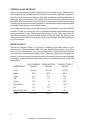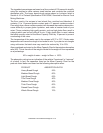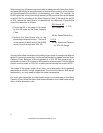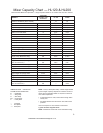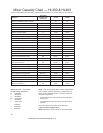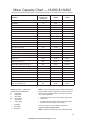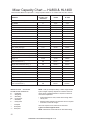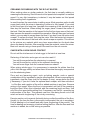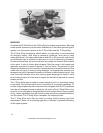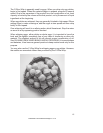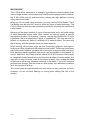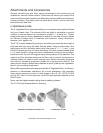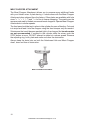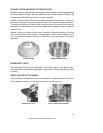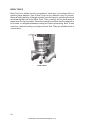
14
WHIPPING
Use either the D Wire Whip or the C Wing Whip for whipping operations. Although
some special operations require other adaptations of the same general type of
agitator, our discussion centers on the D Wire Whip and the C Wing Whip.
The D Wire Whip (sometimes called balloon or cage whip) is recommended
for whipping cream. With today's marketing conditions, most raw or fresh
cream whips well. All cream should be at least 36 to 48 hours old, and should
be suffi ciently high in butterfat to allow the air to be introduced by whipping.
Cream should be cold, but not so cold that ice crystals are formed. When cream
is too warm, it turns to butter when whipped. Start the mixer in fi rst speed and
gradually increase the speed fi nishing in third or fourth. The amount of total
whipping will depend on the condition, temperature and butterfat content of the
cream and the type of product being prepared. An experienced operator will
recognize the point of greatest fi rmness or stiffness in the whipped product. Use
care, the small diameter wires that produce good whipping can break if used
to mix heavy product or if the whip is rapped on the side of the bowl to remove
excess product.
The C Wing Whip may be used for cream whipping, but it is somewhat slower
in operation. One of its principal uses in the kitchen is for whipping potatoes. Of
course, whipped potatoes are cooked and then whipped while hot. The potatoes
must be soft enough to break up easily by the action of the C Wing Whip in low
speed. It is not advisable to whip potatoes in fourth speed without using a splash
cover. If other ingredients (hot milk, butter or other enriching material) are added,
use Stir speed. The C Wing Whip is excellent for whipping butter.
The C Wing Whip may also be used for mixing salad dressing and light
mayonnaise. Since it is an aerating type whip, it reaches its greatest effi ciency
at the higher speeds.
HL200 Mixer Technical Manual Page 40 of 111



